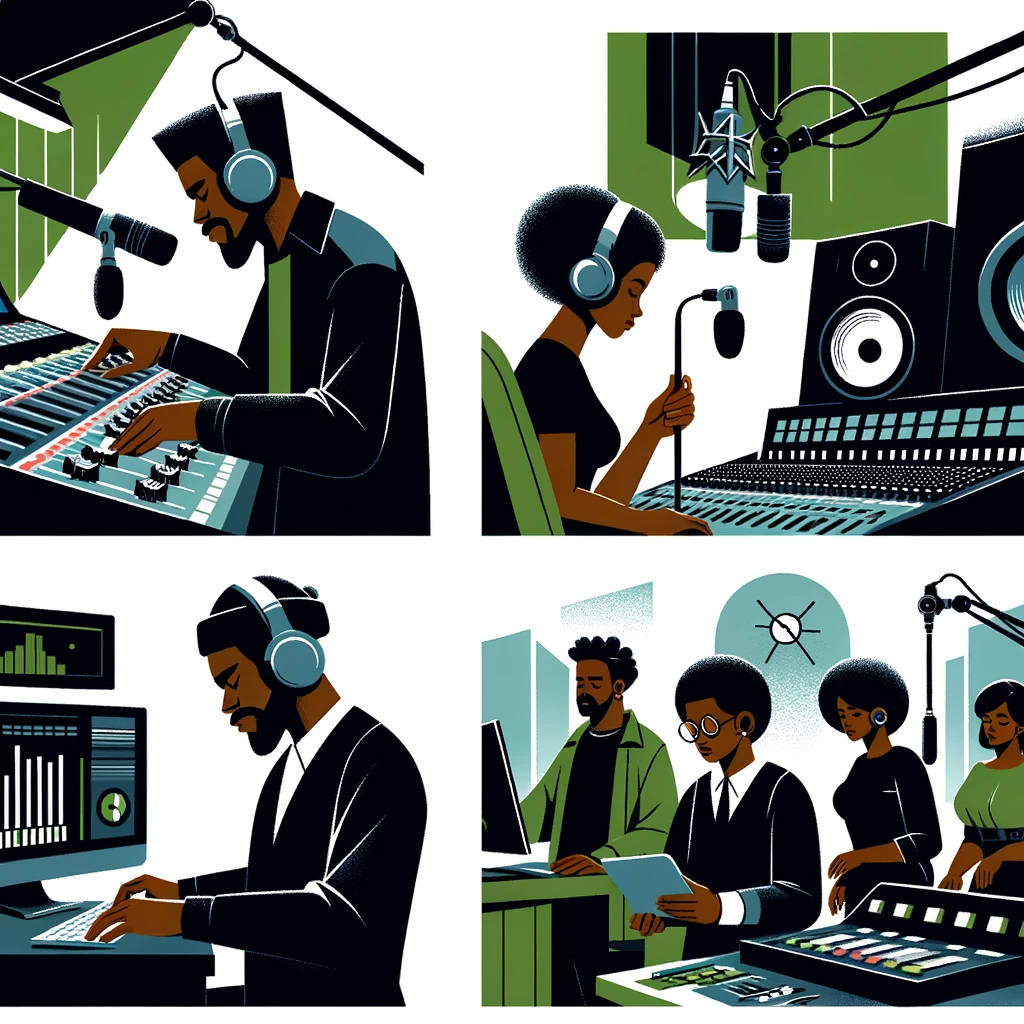Table of Contents
In the world of filmmaking, visuals often steal the spotlight—but sound is just as powerful. In fact, great sound can be the difference between a film that feels immersive and one that feels unfinished. In Nollywood, where creativity often stretches beyond budget, sound design is a craft that elevates storytelling and deepens emotional impact.
This beginner-friendly guide walks through the essentials of sound in Nigerian filmmaking: what makes up a film’s soundscape, how to capture quality audio on set, and how sound is shaped in post-production to bring stories to life.
The Building Blocks of Film Sound
Sound design is more than just recording dialogue. It’s the complete audio environment that supports the visuals—from footsteps and background noise to emotional music cues. In most films, the soundscape includes:
Dialogue
The core of communication between characters. Clear, clean dialogue helps the audience follow the story.
Sound Effects
Anything from slamming doors to epic explosions. These give weight to actions and realism to environments.
Music
A score or song can transform a scene emotionally. In Nigerian cinema, both traditional and modern sounds are used to move audiences and guide tone.
Good sound design blends all three elements smoothly—making the film feel cohesive and lived-in.
Essential Equipment for Recording Audio on Set
You don’t need the most expensive gear, but you do need the right setup for clean sound. Here’s what every Nigerian film crew should be thinking about:
Microphones
- Shotgun mics for directionality (mounted on booms)
- Lavalier mics for hidden placement on actors
- Condenser or dynamic mics depending on the environment
Field Recorders
Portable recorders let you record high-quality, multitrack audio that can be synced with the camera in post.
Boom Poles
Used to position mics just above the actor, out of frame. This gives crisp dialogue without needing visible mics.
Understanding your tools helps you get better results—even on noisy, unpredictable Nigerian film sets.

The Post-Production Process: Sound Editing & Design
Once filming wraps, the sound journey is just beginning. Here’s what happens next:
Sound Effects (SFX)
These are added or enhanced to match actions in the film—punches, phones ringing, cars driving by. They can be pulled from libraries or recorded fresh.
Ambience & Atmosphere
Room tone, city sounds, birds chirping—these subtle layers place the viewer inside the scene. Without them, scenes feel hollow.
Foley
Foley artists recreate small sounds (footsteps, clothing rustles, clinking glasses) in a studio. These sounds ground the scene in realism.
Music
Original scores can be composed or existing music can be licensed. The right sound at the right time can shape how audiences feel without them even noticing.
Post-production sound is where raw, sometimes noisy recordings are cleaned, mixed, and balanced into a smooth, cinematic experience.
The Psychology of Music in Film
Music hits the heart before the head. A well-placed melody, rhythm, or instrument can:
- Build tension
- Create joy
- Signal danger
- Deepen emotion
In Nollywood, composers often mix modern Afrobeat, traditional instruments, and orchestral sounds to bring stories closer to home.
Sound by Genre: How It Changes With the Story
Each genre uses sound differently:
- Horror: Whispering wind, heartbeats, silence before a scream
- Sci-Fi: Beeps, synthetic voices, futuristic hums
- Action: Explosions, gunfire, punchy transitions
- Comedy: Clean timing of jokes and exaggerated reactions
Sound design is tailored to support genre expectations, and when done well, it enhances what’s already working on screen.
Common Challenges on Nigerian Film Sets (and Smart Fixes)
Recording in Nigeria isn’t always easy—but with the right strategies, you can still capture great sound:
- Noise pollution: Record room tone or find quiet takes to patch over noisy moments
- Wind: Use proper mic covers or ADR (rerecording dialogue) later
- Missing ambiance: Always capture “wild tracks” or background noise between takes
- Bad sync: Use clear slates or timecode for easier matching in post
Being proactive on set saves headaches in post-production.
Final Thoughts: Sound Is Half the Story
In Nollywood’s rise to global attention, sound must not be left behind. From the rhythms of Lagos to the whispers of rural silence, what we hear matters just as much as what we see.
Whether you’re a student, a sound recordist, or an indie filmmaker, investing time in understanding audio will make every project stronger.
Let your audience feel the scene—not just watch it.















Leave a comment